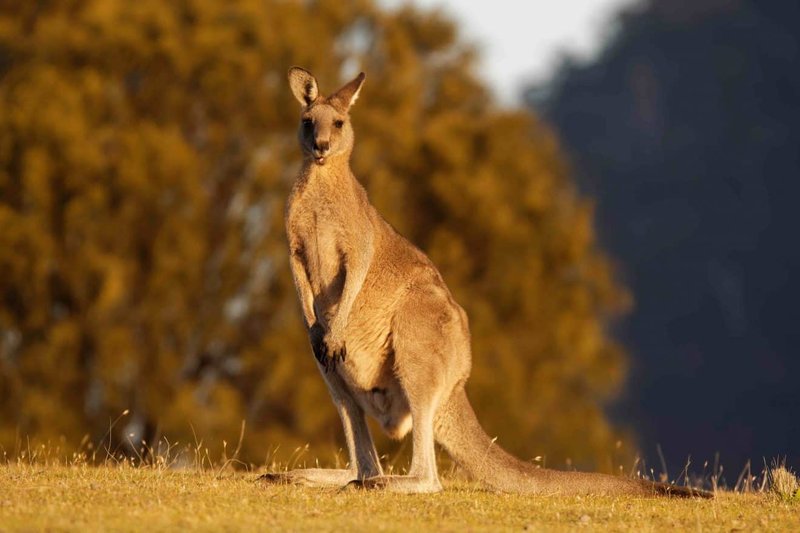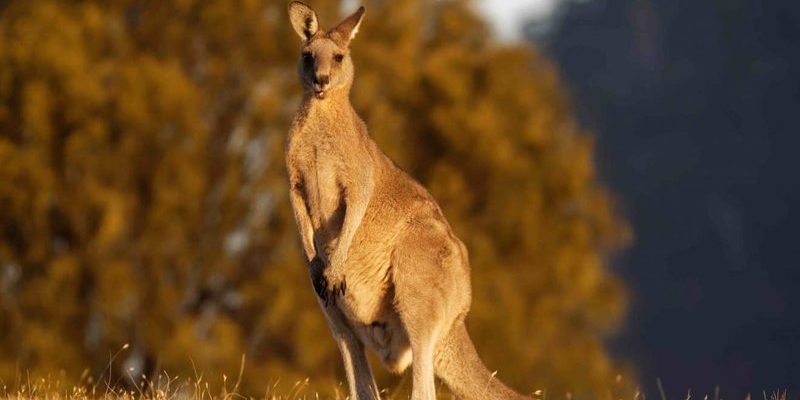
Kangaroos are more than just cute and cuddly creatures; they’re a vital part of Australia’s ecosystem. Their behavior and biology are as fascinating as the vast Australian landscapes they call home. Strap in as we explore ten remarkable facts about kangaroos that showcase their extraordinary attributes and quirks.
Kangaroo Species Are Diverse
You might not know that there are actually four main species of kangaroos. The most recognized ones are the red kangaroo, eastern grey kangaroo, western grey kangaroo, and the antilopine kangaroo. Each species has its own unique traits. For instance, the red kangaroo is the largest, often seen bounding across the arid desert landscapes. In contrast, the eastern grey kangaroo thrives in the lush grasslands and forests.
Additionally, some smaller relatives exist, like the wallabies and tree kangaroos. The diversity within the kangaroo family is immense, showing how adaptable these creatures are. You might be wondering how they manage to thrive in different environments—well, their physical adaptations, such as their fur and diet, play a significant role.
Understanding these differences can enhance your appreciation of kangaroos. Whenever you see a picture or a video of these lively animals, remember that they come in varying shapes and sizes, and each species contributes to the rich tapestry of Australian wildlife.
Kangaroos Are Marsupials
Here’s a fun fact: kangaroos belong to a group called marsupials. This means they carry and nurse their young in pouches. When a baby kangaroo, called a joey, is born, it’s tiny—about the size of a lima bean! Once born, the joey crawls into its mother’s pouch, where it continues to grow and develop in safety.
The pouch isn’t just a cozy spot; it’s also equipped with muscles that allow the mother to close it quickly if danger approaches. Isn’t that fascinating? This adaptation helps protect the vulnerable young as they continue to grow.
As the joey matures, it starts to peek out of the pouch, eventually spending time outside while still nursing. The bond between a mother kangaroo and her joey is strong, showcasing the nurturing side of these typically wild animals.
Kangaroos Are Amazing Jumpers
Have you ever tried jumping as far or high as a kangaroo? It’s a tough competition! Kangaroos are built for incredible agility. Their strong hind legs allow them to leap distances of up to 30 feet in a single bound. That’s like jumping the length of a school bus!
This impressive jumping ability is not just for show. It helps them cover large distances in search of food or water, which can be scarce in the Australian outback. Their unique hopping motion is energy-efficient, allowing them to travel long distances without getting tired quickly.
One interesting thing is that when kangaroos are moving slowly, they actually can “walk” on all fours. They use their tail as a fifth limb for balance. It’s a pretty cool sight, showcasing their versatility in navigating their environment.
Social Creatures
You might think of kangaroos as loners, but they’re actually quite social. They typically gather in groups called mobs, which can vary in size from a few individuals to over a hundred! Groups offer safety in numbers, helping protect each other from predators.
Kangaroos communicate with each other through a variety of sounds, including grunts and clicks. They also use body language, such as grooming each other, which helps strengthen social bonds. When you see a mob of kangaroos, you’re witnessing a complex social structure at work.
Interestingly, the dynamics within a mob can change. Dominant kangaroos tend to establish their rank through sparring matches, using their powerful legs. It’s a bit like a game of chess, where strategy and strength come into play.
Unique Feeding Habits
Kangaroos are herbivores, meaning they primarily eat plants. Their diet consists mainly of grasses, leaves, and shoots. They have a specialized digestive system that allows them to break down tough plant material effectively.
One fascinating aspect of their feeding is that kangaroos often graze at night, which helps them avoid the hot daytime sun. You might find it interesting that their bodies are incredibly efficient at utilizing water, allowing them to survive in arid environments with little drinking water.
Interestingly, kangaroos can also go for long periods without food or water, thanks to their ability to slow down their metabolism. This adaptation is crucial for survival in Australia’s often harsh conditions.
Kangaroos Can’t Move Backward
Now, here’s a quirky fact: kangaroos can’t move backward! Their large tails and thick hind legs prevent them from stepping back easily. This unique trait is one reason they’ve become a symbol of progress in Australia.
You might find this interesting: kangaroos are often depicted in advertisements and logos, showcasing their forward-moving nature. They’re a reminder that sometimes, it’s all about moving ahead, no matter the obstacles.
This characteristic also plays a role in their habitat. When kangaroos graze, they maintain the landscape, preventing overgrowth by focusing on moving forward rather than retreating.
Kangaroos Are Vital for the Ecosystem
Kangaroos play an essential role in the Australian ecosystem. By grazing on grasses, they help maintain the health of the land. Their eating habits promote new plant growth, supporting various other species in the area.
Moreover, kangaroo droppings enrich the soil, providing nutrients that help plants thrive. It’s a great example of how interconnected nature is! You might think of them as gardeners of the Australian wilderness, keeping the environment balanced.
Their presence also affects the animal community. Other species, such as smaller mammals and birds, rely on the environments created by kangaroos. This symbiotic relationship highlights the importance of preserving kangaroo habitats for the overall health of the ecosystem.
Kangaroo Conservation Efforts
Despite their iconic status, kangaroos face several threats, including habitat loss and climate change. Conservation efforts are crucial to ensure their survival for future generations.
Organizations work to protect their habitats, educate the public, and promote sustainable land management practices. You might be surprised to learn that some areas have established wildlife sanctuaries specifically for kangaroos. These protected spaces allow them to thrive without the stresses of urbanization or farming.
Support from local communities is also essential. When people become aware of kangaroos’ importance, they can contribute to their preservation, whether through volunteering, donations, or simply spreading the word.
A Cultural Icon
Kangaroos are more than just animals; they are a vital part of Australian culture. They appear on national symbols, sports team logos, and even currency! This widespread recognition highlights their significance to the country’s identity.
You might be surprised to know that kangaroo imagery can be found as far as Australia itself. They embody the spirit of the land, representing strength, agility, and endurance. Tourists often seek out kangaroo encounters, making them a major point of interest for visitors.
Moreover, many Indigenous Australian cultures hold kangaroos in high regard, often featuring them in traditional stories and art. This cultural connection adds layers to their importance beyond just being animals.
In conclusion, kangaroos are truly fascinating creatures. From their unique biological traits and social behaviors to their role in the ecosystem and cultural significance, there’s so much to admire. Whether you see them hopping across the outback or learn about them through conservation efforts, it’s clear that kangaroos are a vital part of our world. Let’s continue to appreciate and protect these remarkable animals.

